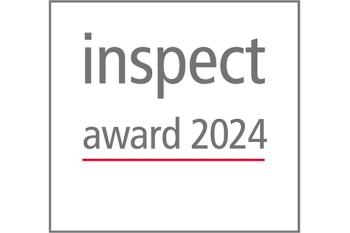Near to REM … and More
Surface Analysis with Materials Microscopy
Surface metrology is quickly emerging as a critical analytical technique to determine the topology of various materials. It can be used to identify corrosion, surface characterization, or to control the quality of different surfaces.
Conventional methods such as profilometry, have involved the use of a stylus being dragged along the sample surface. However, this technique can be problematic; it cannot be used on certain materials, such as adhesives, and the dragging process itself may result in inaccurate data being obtained. As such, the new Lext confocal laser scanning microscope (cLSM) concept from Olympus utilizes optical metrology, enabling non-contact surface roughness measurements to be obtained. The new scanning microscope is the next generation of the Lext concept, providing high-precision 3D surface profile observations and measurements in real-time. Combining advanced optics and reliability with a user-friendly software interface.
Surfaces play a key role in modern material science and engineering. Therefore, the analysis of surfaces is becoming more important than ever across a wide range of applications, including surface texture analysis, carbon nanotubes, carbon fibres, and identifying scratches in glass. Accurately measuring small scale features on various surfaces can be highly problematic. Features such as surface roughness are often on such a small scale that standard light microscopes are not able to resolve the details with the required level of clarity or accuracy.
The Laser Scanning Microscope
The observation and study of small and complex objects presents many challenges. As such, the new scanning microscope is able to simplify the process of visualizing complex materials on the micro-scale. The system features improved functionality, as well as an even higher level of visualization and measurement performance than its predecessors. This extremely reliable system provides exceptionally accurate results to the very limits of optical resolution. Such a high resolution is possible through the use of the innovative dual pinholes, which enable steep slope detection, even at a low magnification. At different sizes, each pinhole represents a different level of sensitivity; the smaller being for exceptional accuracy while the larger is suitable for a higher dynamic range. Situated directly behind the pinholes are two photo-detectors, each with different AD converters to transfer the best possible signal into a computer generated image. Furthermore, the use of high-speed MEMS (micro electromechanical systems) technology provides a resolution which exceeds that normally associated with optical microscopy.
With anti-vibration stabilization, image quality is improved and noise is minimized. Furthermore, this unique microscope incorporates features such as a motorized stage, improved signal to noise ratio, and improved colour quality, to ensure accurate and repeatable results are obtained every time. The advanced XY laser scanner used in the Lext system makes the scanning process exceptionally fast and the results more reproducible compared to conventional scanner technologies. With a complete range of specially designed objectives, optical performance has also been improved. Developed with the world-class optical technology of Olympus, the highest level of optical clarity and measurement accuracy at high magnifications is possible. The entire system has been optimized to provide an exceptional performance, and high order optical artefacts have been created to obtain the best possible results. An optical system is utilized that minimizes the aberrations associated with short wavelengths while maximizing the transmission, high quality images and signal responses are easily achieved.
The Software
The easy-to-use software provides a user-friendly interface suitable for use by beginners and experts alike. The software builds up a workflow reflecting the users experience level. The essential buttons are visible on-screen from the start and the more complex function keys only become available as and when they are needed. This keeps the on-screen display simple, allowing beginners to navigate the software without any confusion. Furthermore, the new user ID control function enables each user of a shared system to password protect individual settings. This time-saving function eliminates the need to set up the desired parameters every time. Coordinates can be pre-set and retained by the system, making it extremely simple to automatically generate a standard set of measurements.
This unique microscope offers a full range of precision measurement and analysis functions to meet virtually any requirement. Three-dimensional measurement enables step height, line width and the distance between two points to be measured. Upper and lower limit settings, followed by one-click image capture are now exceptionally fast, saving valuable researcher time. 3D images can be freely rotated using the mouse to grab and drag, while a variety of image presentation patterns are provided. With a dedicated surface roughness testing mode, measurements can be gathered using the small laser spot. As well as they can be measured along a single line, much like conventional roughness gauges. Further minute roughness analysis can be made using the unique region of interest (ROI) function. Materials analysis using cLSM enables contact-free measurement, what consequences a wider range of materials with accurate imaging. The use of lasers eliminates the need to drag a stylus across a sample, which may cause damage to the surface of the sample, resulting in incorrect results being obtained. Furthermore, adhesive materials, such as sticky notes can now easily undergo a roughness analysis.
Laser microscopy has evolved beyond basic 3D geometry to enable extremely accurate measuring systems on the micro-scale. The new Microscope combines advanced optics and dual pinhole technology. It provides a unique, reliable and robust confocal laser scanning microscope. 3D reconstruction of topologically complex objects becomes simple, with non-contact surface roughness measurements enabling a more completed image and accurate results. Furthermore, the user friendly software interface is simple to use for beginners and can be tailored to suit the needs of a more advanced user. With outstanding resolution and magnification, the microscope is designed for researchers working between the limits of conventional optical microscopes and scanning electron microscopes (SEM). As the latest evolution of the Microscope family, the total cost of ownership has been reduced, with less energy being consumed to save the laboratory on running costs.








